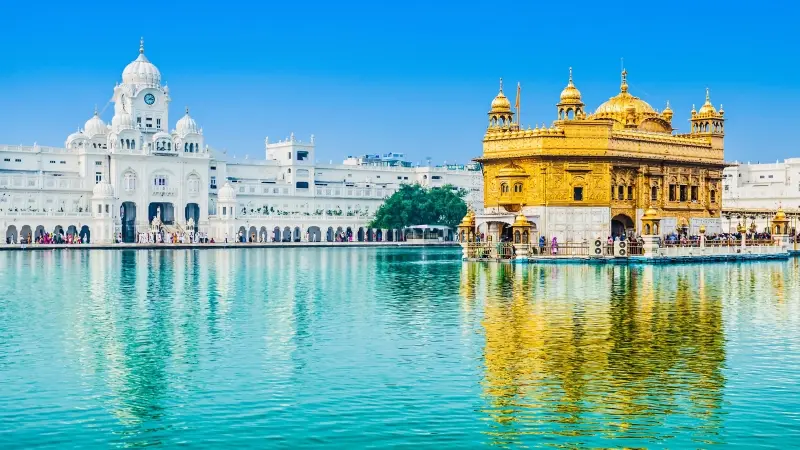Golden Temple Amritsar - A Sacred and Majestic Place of Worship
The Golden Temple, also known as Sri Harmandir Sahib, is a place of great religious significance and architectural beauty.

The Golden Temple, also known as Sri Harmandir Sahib, is a place of great religious significance and architectural beauty. Located in the city of Amritsar, Punjab, India, it is the holiest shrine of Sikhism. The temple attracts millions of visitors from all over the world, who come to experience its serene atmosphere, spiritual teachings, and breathtaking beauty.
History and Significance
The Golden Temple was built in the 16th century by Guru Arjan Dev, the fifth Sikh Guru. It is a symbol of equality, unity, and religious tolerance. The temple is open to people of all faiths, and everyone is welcome to visit, pray, and partake in the langar, a free community kitchen that serves meals to all visitors.
The temple complex is surrounded by a holy pool called the Amrit Sarovar, which is believed to have healing properties. The name "Amritsar" translates to "Pool of Nectar," reflecting the spiritual significance of the site.
Architectural Marvel
The Golden Temple is renowned for its stunning architecture, blending both Hindu and Islamic styles. The temple is made of marble and covered in gold leaf, giving it its distinctive golden appearance. The gilded dome, known as the Harmandir Sahib, shines brightly in the sunlight, making it a breathtaking sight.
The temple complex is accessed through a marble causeway, known as the Guru's Bridge, which symbolizes the path to enlightenment. The main entrance, called the Darshani Deori, is adorned with intricate carvings and leads to the inner sanctum where the Guru Granth Sahib, the holy scripture of Sikhism, is kept.
Spiritual Experience
Visiting the Golden Temple is a deeply spiritual experience. As you enter the temple complex, you are greeted by the soothing sound of Gurbani Kirtan, devotional hymns sung by the Sikh community. The atmosphere is filled with peace and tranquility, making it an ideal place for meditation and reflection.
One of the most sacred rituals at the Golden Temple is the Palki Sahib ceremony, where the Guru Granth Sahib is carried in a procession to the inner sanctum. This ceremony takes place early in the morning and is a sight to behold, as devotees gather to witness this sacred event.
Langar - A Community Kitchen
The Golden Temple is famous for its langar, which is the largest free community kitchen in the world. Every day, thousands of volunteers come together to prepare and serve vegetarian meals to all visitors, regardless of their religion or social status. This act of selfless service, known as seva, is a core principle of Sikhism.
Partaking in the langar is a humbling experience, as you sit on the floor alongside people from different walks of life, sharing a meal together. It promotes equality, unity, and the spirit of giving.
Conclusion
The Golden Temple in Amritsar is not only a place of worship but also a symbol of love, peace, and harmony. Its architectural beauty, spiritual teachings, and the spirit of seva make it a must-visit destination for people seeking solace and enlightenment. Whether you are a Sikh or not, a visit to the Golden Temple is a truly enriching experience that will leave a lasting impression on your heart and soul.

